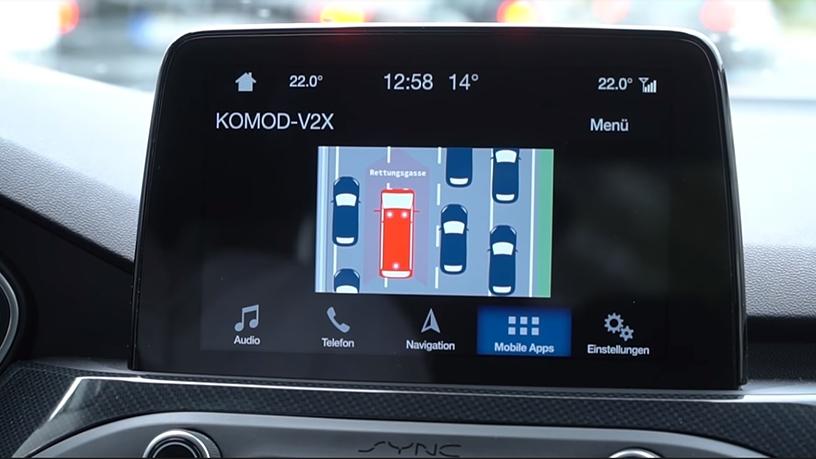
Emergency responders need to transport accident victims to hospitals as fast as possible, but are often held up by traffic unknowingly blocking their route.
Ford plans to change this by introducing technology in its cars to warn drivers when there is an accident up ahead and give them directions to make way for ambulances, fire engines and police vehicles.
The motoring company is testing the prototype technology in Germany in partnership with Vodafone. It is being trialled as part of KoMoD (Kooperative Mobilit"at im digitalen Testfeld D"usseldorf), a EUR15 million (around R250 million) project for the practical testing of new connected car technologies and automated driving.
The system works by enabling the car that is in the accident to immediately alert emergency services, and other vehicles around it, which in turn communicate with each other to inform other drivers nearby.
The emergency vehicle will then send out an alert when it is on route and drivers in front of it will get an in-car display showing where the emergency vehicle is and where they should manoeuvre to create an 'emergency corridor' and not be an obstruction.
Ford says some of its new Focus vehicles already have 'eCall' functionality, which can automatically call emergency services, and enables occupants to do so manually by pushing an SOS button inside the car.
"Anticipating a future where all vehicles communicate with each other via mobile phone networks and embedded modems, Ford and Vodafone are now exploring how 'eCall Plus' might also inform other drivers that there is an accident ahead, across a range of up to 500m," says Ford in a statement.
"Attending emergency vehicles would also issue the warning, using in-car displays to show the correct 'emergency corridor' formation."
"The digital revolution is bringing new forms of mobility, which may help save lives on our roads," says Hannes Ametsreiter, CEO of Vodafone Germany.
"When cars communicate with each other, our rescue teams get a clear path forwards, so they can provide the right help at the right time, in situations when every second counts."
According to experts surveyed by Ford, survival rates for road accident victims can be improved by as much as 40% if they receive treatment just four minutes more quickly.
Ford will test further technologies at KoMoD, including a traffic light assistance system and a tunnel information system, which will use messages from roadside units to alert motorists to speed limits, slowly moving vehicles or lane closures.
Share